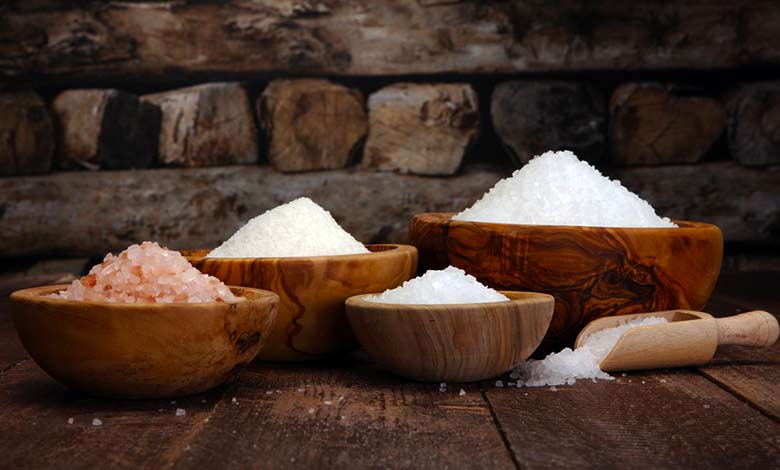
Sea salt comes from the evaporation of seawater and contains trace amounts of minerals stripped from table salt. Table salt has added iodine during refining, an essential element for human nutrition and artificial anti-clumping agents. Salt appears white in color due to its molecular and crystalline structure, affecting how it interacts with light. At first, this salt looks gray or darker, but some refine, and factory processes purify it to look white. Here are the reasons why salt appears white:
Crystal Structure: Salt, specifically table salt or sodium chloride (NaCl), comprises tightly packed crystal structures. The crystals are formed through ionic bonds between sodium ions (Na+) and chloride ions (Cl-). The regular arrangement of these crystals gives the salt its characteristic crystalline appearance.
Light Reflection: Salt crystals are highly reflective. When light strikes the surface of the salt crystals, it interacts with the regular arrangement of the ions and is scattered in all directions. The multiple reflections and refractions of light within the crystal lattice cause the light to bounce off the surface, resulting in high light scattering.
Light Absorption: Salt crystals do not selectively absorb specific wavelengths of light. Instead, they reflect most of the light that falls on them, regardless of the color. Since white light combines all visible wavelengths, the reflected light from salt crystals appears white to our eyes.
Transparency of Individual Crystals: While salt crystals are transparent, the combined effect of the arrangement of numerous crystals creates an overall white appearance. This is because the individual crystals scatter and reflect light in various directions, causing the light to be diffused and making the salt appear white.
Sodium chloride crystal comprises sodium ions, which are cations and chloride ions. The chloride ions being comparatively larger, occupy the corner and face-centered positions. The sodium ions, smaller in size, fill up the voids.
Thus sodium ions occupy the octahedron voids in a cubic structure. Each chloride ion is surrounded by six sodium ions extending the structure, while six chloride ions surround each sodium ion. So the coordination number is six. Sunlight or electric light passes through these coordinates and absorbs colors.
Sunlight travels through space in different wavelengths, which are reflected into space once it hits the Earth’s atmosphere. Some others are scattered once they enter the atmosphere, and a large portion of wavelengths eventually make it to the Earth’s surface.
Sea salt crystals aren’t white. They’re entirely transparent. The diameter is larger than the wavelength of the visible spectrum, reflecting and scattering light equally, making them white. Some of them are denser than others because they contain more crystals. Visible light finds it challenging to pass through those crystals. It means that reflectivity is greater than invisibility.
White light from the sun comes in and bounces back to our eyes. The light comes in, bent as it passes through the first crystal, and then bends again as it passes through the second crystal. So it zigzags its way through the pile of salt and eventually finds its way out to our eyes. That’s why we see salt as white.
Read More:
What Makes The Sea Water Salty?
Why Does Salt Make Food Taste Better?

